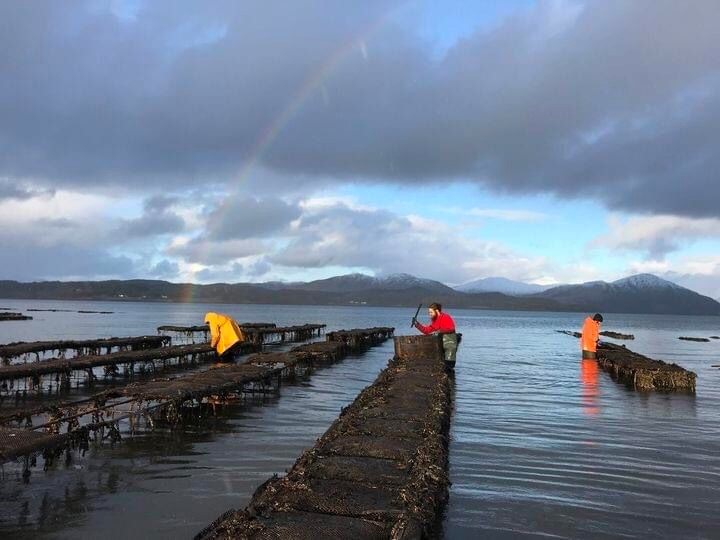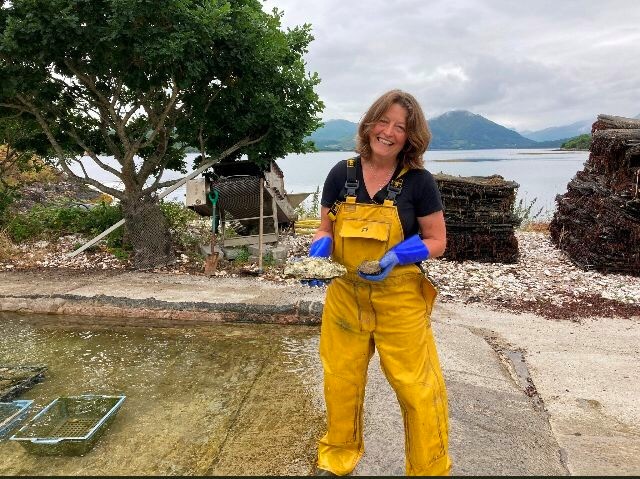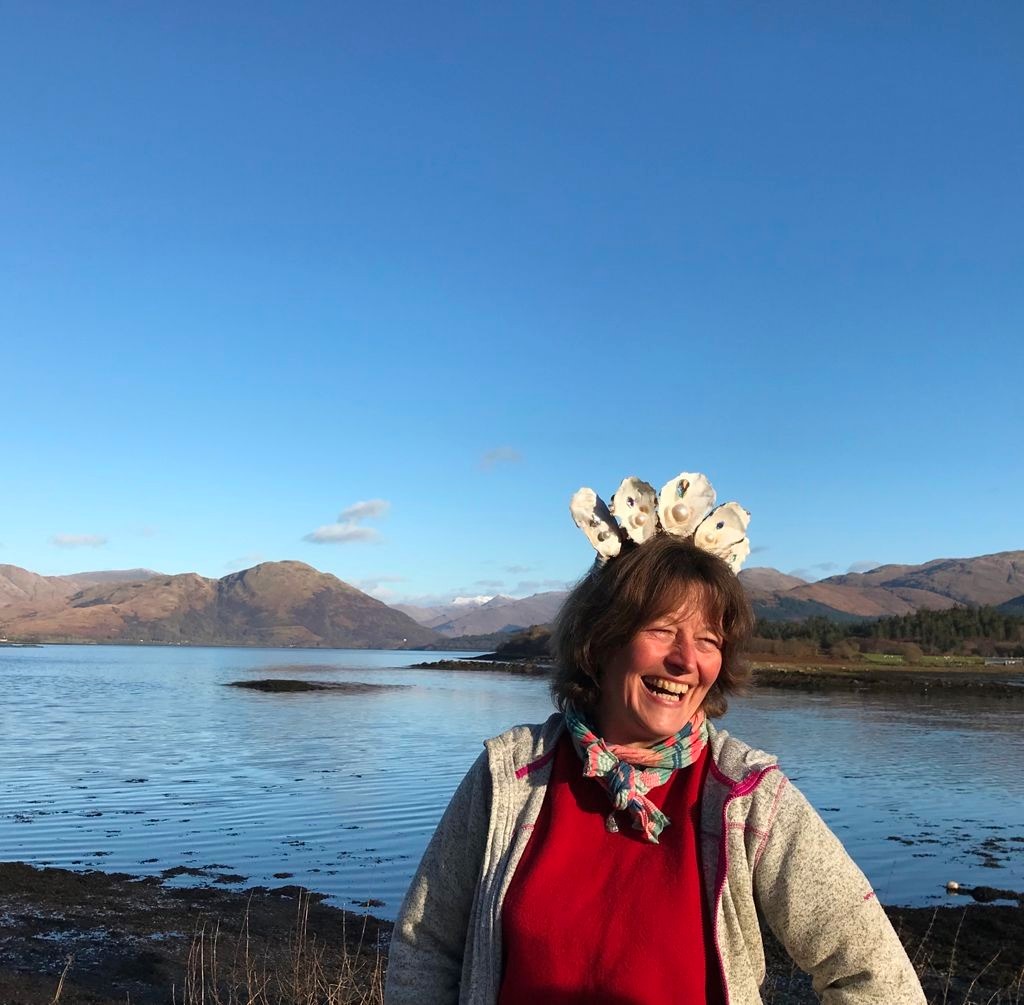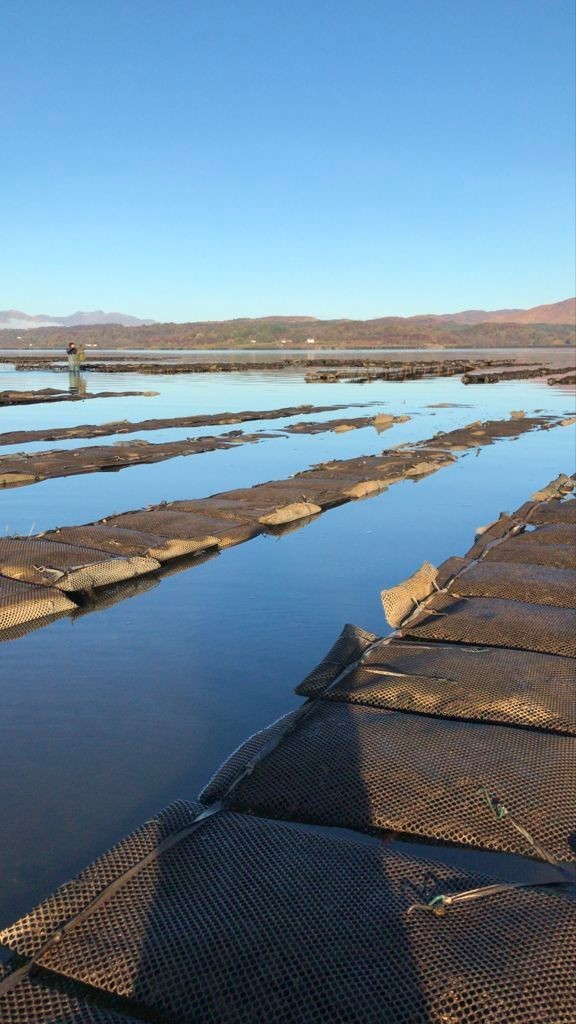Caledonian Oysters
A lifetime working with oysters and governed by the tides, was not the career that Judith Vajk of Caledonian Oysters had in mind, when she set off for Paris on a gap year to work as an au pair. It is, however, one that has served her well, and one that now includes two of her children working in the business.

“I met my late husband Hugo, while staying at my employers’ holiday house in Normandy, and it was ‘love at first sight’,” she said.
Judith soon discovered that Hugo, a physicist, had a passion for oysters, but it took her a while to develop her own. She at first tended to agree with the Irish satirical novelist Jonathan Swift, who wrote: “It was a bold man that first ate an oyster!”
In 1985, the couple moved to the Channel Island of Herm to start farming their own Pacific oysters (Crasostreas gigas), and lived and worked there for 10 years, before the call of home got too strong for Judith.
“I was homesick, we were tired of all the logistical issues that farming on a small island brought, such as unreliable transport and flights cancelled due to fog, and the fact that we would have to send the children to board on Guernsey for schooling. We had long been selling part-grown oysters to a farm on the West coast of Scotland, and when we heard it was for sale, our future was decided,” she said.
Oyster seed is bought in at 7mm from Mark and Penny Dravers of Guernsey Seafarms, a trade that Judith has maintained since Herm days. The majority of seed arrives for the big Spring tides in April, with a second batch in Autumn. She also grows a few native oysters (Ostrea edulis), which are supplied by Morecambe Bay Oysters.

Judith finds that little has changed structurally in the industry in the 35 years she has been working in it, although the introduction of swinging baskets systems such as the Australian-made SEAPA are starting to make inroads in Europe. These move with the tide and keep the oysters tumbling, which in turn helps to develop a well-cupped oyster with a clean shell and high meat content.
“Swinging systems also do away with a lot of the backbreaking labour required to turn bags on trestles and remove the seaweed that can grow in abundance. We keep some native oysters in baskets, but prefer to grow our Pacific oysters in traditional mesh bags laid on low metal trestles on the beach,” she said.
Oysters are graded regularly, a process that involves moving the bags up the beach using a multi-track vehicle, to the depuration centre. They are sorted using a Marel grader, then placed back into bags at a density that allows them room to grow and feed naturally on the rich supply of plankton in Loch Creran. From seed to harvest size, which is a minimum of 60 grams, takes around 3 years.
To keep track of growth and harvests on the farm in real time, Judith relies on a Smart Oyster farm management system.
“The Smart Oyster system has made us more organised in getting the farm documented and we are liaising with its designers to improve the way it works for us. Before Hugo died four years ago (in a work-related accident) everything to do with the farm and all the major decisions rested on his shoulders, so it has been a steep learning curve for me, and having a way to log everything has really helped,” she said.
The farm is a happy place, with children Angus and Mairi moving back home to work full-time on the farm, and Shona providing an additional hand during the Spring tides.

“Working here was never in any of their plans, but its lovely to see them every day and they are seriously considering making the farm their futures. We are also lucky in attracting other young workers and currently have a Bulgarian and a Belgian, as well as our stalwart Sophie, who has made oysters her own passion,” Judith said.
Young blood brings in fresh ideas, and Angus’s brainwave to put an insulated tub of oysters and an honesty box at the end of the driveway to the beach, proved to be a hit with locals and visitors to Argyll.
“We have only had one issue when the money was taken, but it didn’t put us off and I am pleased that the stand has given our oysters wider recognition,” she said.
In the summer months, oysters have to be depurated in tanks of sterile seawater for 42 hours, before they are packed into net bags and sent to wholesale and restaurant customers around Scotland – including to some of the country’s best seafood restaurants. During the rest of the year, they are given a thorough washing before packing.

Judith also does a fair trade at the Perth farmers market, where she has gained a loyal following over the years, and her dad often lends a hand, shucking oysters for people to eat at the stand.
She is often asked if she can do home delivery sales, but is not set up to do this. Instead, Judith sells to Fishbox, which includes Caledonian Oysters in their online sales brochure.
“Angus also does an occasional run into Edinburgh, which he advertises through social media and drops off at an arranged delivery point,” she said.
Covid-19 resulted in a slow-down in sales, but also gave her time to catch up with a backlog of husbandry and maintenance on the farm. Sales have since increased, although Judith admits that they are not yet back to former levels, and she feels for her restaurant customers, who are still experiencing closures and staff shortages because of the pandemic.
One of the biggest changes she has noticed in the past few years is the growth in the amount of paperwork oyster farmers are required to keep up with, which is becoming onerous.
“Hugo once said that because of all the regulations and restrictions that are constantly being introduced, if he was starting out again, he wouldn’t go into oyster farming. And that was a few years ago!” she said.
Looking to her own future, Judith admits that she never imaged she would still be farming oysters when she approached 60.
‘I will reassess things next year when I hit that milestone, because oyster farming is hard, physical work. For now though, I can’t imagine doing anything else, and the views from my open air office are stunning, come rain or shine, hail or snow!” she said.





